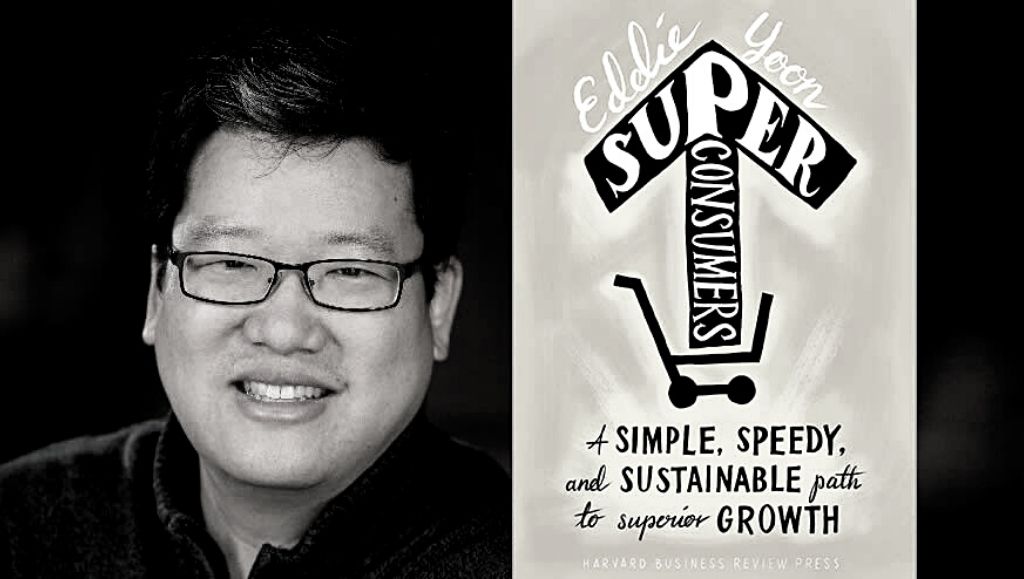Building a startup is like raising a kid.
Some parents—the startup founders—do an excellent job of setting their startup up for great success. But the majority of them wither away in mediocrity because of one or several factors like wrong timing, lack of funding, hasty founders, bad products, or lack of distribution.
So how do people start a startup with a difference? I doubt that there’s an easy blueprint for startup success.
On the other hand, there are entrepreneurs like Elon Musk, Richard Branson, or Gary Vaynerchuk who build one successful business after another—as if there’s a formula for success.
After studying the patterns of these successful founders, here’s what I think you should do to build a profitable startup.
Find a Product Idea That Solves a Problem
Most startups that go on to become rocketships begin as an idea in someone’s head.
Marc Benioff conceived Salesforce in his small San Francisco apartment before he quit his cushy job in Oracle. Three of Beinoff’s colleagues joined him as co-founders and his boss from Oracle became the first person to invest in his idea of selling cloud-based software.
Mark Zuckerberg and his buddies started The Facebook as an idea to help Ivy League students network among themselves. The idea was so good, Facebook got over a thousand sign-ups the very next day of the launch. Pretty soon, it grew into the biggest social media platform that Friendster or MySpace could never be.
Look at any successful product company around you today and you will see this same pattern of a founder having an itch for an idea. But what separates a successful startup from the rest? It’s often an idea that:
i) solves a pressing problem
ii) is monetizable
iii) is scalable
In the business world, ideas are dime a dozen. Timely execution is the bedfellow of a good idea. And on top of relentless execution, good ideas get the sequence right—first there’s a problem then there’s a solution to that problem.
The ones that fail on their startup journey usually put the horse before the cart. They come up with an idea assuming that if they will build a product with such and such features, they will attract customers to the product. That’s the wrong way to go about it.
If you are considering building a startup, pursue an idea (a minimal viable product or an MVP) that puts out a fire—whether it’s a kitchen fire or an inferno.
Research and Validate Your Startup Idea
Intuition is a very strong force during the initial years of your startup launch. But it’s a huge risk relying solely on your intuition while growing your startup—what if your assumptions turn out to be a mere guesswork?
A majority of startup founders believe in the hero myth—a belief that their product is the best in the world. It’s one thing to be blindly in love with your baby, but praising your own product without collecting objective feedback is borderline delusion.
Thankfully, there’s data to the rescue. How do you know if you have a fire extinguisher with powerful chemicals or just a bucket of sand as a workaround solution?
Market research is your answer. It will help you understand who your ideal customers are, what are the causes of fire in their lives, and what ingredients are most effective in your canister.
However, no amount of second-hand data is better than talking to your customers on a 1:1 basis. Start your research by talking directly to the right customers. It’s a much better approach to collect qualitative data about your product than looking at reports and dashboards.
Find people whose houses are prone to fire and let them sample your product. For startups, it’s as simple as finding prospects who you think are going through the problem that your MVP solves and asking them to test your products—usually for free.
At this point, you might want to run a lot of A/B testing on your product, marketing, and other growth strategies to see what works. Don’t worry about not having fancy tools to do it if you’re a cash-strapped startup. Get in front of different sets of customers and ask them what they like or don’t like about your product. Drift’s founder David Cancel dubs this organic process of split-testing as “ghetto testing.”
If your research finds that customers are willing to shell out money to buy your product, that’s a good validation for your MVP. It might also be an indication that you have figured out your product-market fit.
If you get cold shrugs or lukewarm responses, it’s time for you to go back to the drawing board and make changes to your product based on customer feedback.
Assess Your Product-Market Fit
Finding a product-market fit is finding more number of customers who liked your product during the research phase. It’s usually the most challenging—and yet exciting—part of building your startup.
It’s exciting because nothing makes founders happier than coming across people who love what you have built. But it’s challenging because you will have to remove the husk from the paddy—you have to filter through a lot of noise to find the right people.
Some startups have it easier than others. Facebook, for example, was an instant rage among its target audience. The company didn’t have to wait long to find a PM fit, mostly because it was modeled after platforms that were already doing well (MySpace and Friendster). In other words, Facebook had a strong pull in the market.
Other startups, like Netflix or Airbnb, took around two years from their launch to find their product-market fit. They had to keep hitting one milestone after another to confirm that they were indeed in the right direction. Both of these startups had to keep pushing their products to the market until they found the pull.
In their defense, Airbnb and Netflix were both one-of-their-kind startups and radically different from their incumbents, which makes product adoption slow and reluctant even among their ideal customers. They had to reiterate their product and strategies many times over to convince their customers.
Some iterations will take your startup to completely new discoveries, eventually causing you to pivot. Pivoting is a good strategy to steer your startup in the right direction, usually where there is a more vocal demand for your product. Case in point—Twitter.
Very few people remember this, but Twitter began as Odeo—a platform for people to publish, find, and subscribe to their favorite podcasts.
Spooked by iTunes’ growing market share in the podcasting niche—possibly after talking to their potential customers—Odeo founders Jack Dorsey and Biz Stone decided to turn it into a micro-blogging platform. And look where that pivot has taken them now!
Once you have the product-market fit, figure out a go-to-market strategy and the business model that works best for you and your audience.
Gain Traction
Finding the right product-market fit often opens the door for you to get traction—a solid, measurable proof that you have a monetizable product at hand.
DuckDuckGo’s founder and CEO Gabriel Weinberg talks about 19 customer acquisition channels that can help you get traction. Once you find the channels that work best for you, your startup will see hypergrowth within a short span of time.
You will get plenty of hints when your startup hits traction—more people will come to know of your brand, investors will be eager to fund your startup, and your growth will start to resemble a hockey stick.
Sometimes, traction can be a treacherous territory to tread on. You may apply too many growth hacking tactics, grow exponentially, and fizzle out like a supernova.
Apoorva Mehta, CEO and founder of Instacart, the SF-based online grocery delivery startup can show you an example. Instacart wasn’t Mehta’s first rodeo. He had a track record of failing 20 startups before Instacart, one of which was WebVan—an online grocery delivery platform that he launched in 1999. It was the ditto of Instacart, only 13 years older.
Around 2001, just when WebVan had early traction—$800 million in VC funding and $375 million in an IPO in November 1999—the company went belly up mainly because of two reasons.
It spent all of its cash reserves on rapid growth and expansion goals. As a result, WebVan became one of the biggest startups to go bust during the dot-com bubble.
It would be foolish to slow down when you hit a momentum. But to avoid your startup from being yet another flash in the pan, use the traction time to grow more sustainably—be it through funding, acquisition, or organic means.
Also, double down on marketing and building lasting customer relationships to ensure you have a safety net for any eventuality. Back up your traction with ruthless prioritization—by doing what matters the most for your startup.
Hire Slow, Fire Fast
Most startups, when they start to see traction for their products, go on a shopping spree to hire talents for all business functions. Hiring indiscriminately in the name of growth is as bad as the hasty expansion that we discussed in the previous section.
Hiring slow, however, doesn’t necessarily mean recruiting people at the speed of a sloth. It means you should hire people not as a reaction to your traction but as a mindful intention to complement your growth.
For example, Drift founders prioritized their early hiring based on the goals they had for their startup. The founders wanted to follow a product-led growth path for Drift. Based on that plan, the first 10 hires at Drift were engineers who helped the founders build a touchless, self-service product to drive sales in their early stages.
It wasn’t until they started getting some decent sales velocity from their product when the founders decided to hire their first salesperson—mostly to have someone to talk directly with the customers.
On the other hand, firing fast helps you course-correct your hiring mistakes. It sounds like a terrible thing to hire people just to let them go at the first chance you get. But firing fast often helps you become better at refining your hiring strategy, set a high bar for your future recruits, and save time for you and the wrong recruits.
You don’t have to feel guilty about letting people go if it means good business all around. Take inspiration from Zappos, for instance. The online shoe retailer offers a handsome “quitting bonus” to their employees if they decide to leave their jobs during the probation period. It’s a small price Zappos pays to filter out candidates who don’t fit their company culture.
Amazon, after acquiring Zappos in 2009, introduced this incentive and offers its own employees up to $5000 in quitting bonus if they decide to leave.
If you are a bootstrapped startup, you probably can’t afford to dole out thousands of dollars for each employee who wants to jump your ship. The point of the examples above is—create a guilt-free system to identify bad hires and let them go without any hard feelings.
Build Good Culture
Culture in a startup is like an entrepreneur with a character. You can learn skills or hire the world’s best talents, but you won’t go too far with a bad character.
A startup with great success but bad culture will eventually implode from within—like a star that collapses due to its own gravitational pull.
Theranos is a textbook example of how a startup fails due to cultural mishaps. From the very beginning, Theranos’ culture was based around its founder’s narcissism, the false promises it made to its customers and investors, and toxic management. The morally bankrupt startup failed miserably after not being able to hide its skeleton from the public eyes for too long.
Wall Street journalist John Carreyrou has documented the rise and fall of Theranos and its founders in his critically-acclaimed book Bad Blood: Secrets and Lies in a Silicon Valley Startup.
Your startup culture is one of the few traits that is unique only to you, that no competition can copy. And it can be a myriad of things like being employee-centric, always being in proximity with your customers, putting the company before everyone/everything, or never losing your startup DNA.
Building a healthy organizational culture is like creating guardrails around your startup. If, for example, an individual or a team hits the guardrails by being too insular instead of focusing on the problems at hand, the founders can immediately zoom in and weld things together.
A good rule of thumb for leaders when setting cultural norms in a startup is to follow the old adage—trust, but verify. Always assume the best of intentions in any individual or team, but never hesitate to look deeper into a context.
Do your due diligence to make sure every team in your startup is following the cultural norms and learn from your findings to hone in your startup’s culture.
Scale, But Only If You Must
Many startups don’t know when to scale up. Some even question if they should. Scaling is the only way forward for startups that are witnessing steady growth.
Paul Graham, the co-founder of Y Combinator, calls this scaling “the only essential thing for startups. Everything else we associate with startups follows from growth.”
So the question isn’t really about whether you should scale, but when. Of course, one of the prerequisites is to have a scalable product. Besides, Eric Ries and Steve Blank offer an easy heuristic for startups to answer this question—nail it then scale it.
The “it” in their framework represents four different phases of the startup growth before they are ripe for scaling:
- Pain
- Solution
- Go-to-market
- Business model
That’s pretty much all the points that we discussed above. Once you “nail” the basics, you can now step back and automate your processes, delegate or outsource responsibilities to key people, or double your speed of growth—whatever it takes to scale your startup to new heights.
This will help you focus on higher-level tasks like leadership, funding, or building a narrative for your brand, or creating a new category to lead.
If you are really witnessing explosive growth, you should consider blitzscaling—an uber-aggressive approach to rapidly grow your startup to expand your customer base all across the globe.
PayPal, LinkedIn (whose founder Reid Hoffman coined blitzscaling), and Instagram are a few startups that scaled at a blitzkrieg speed.
Blitzscaling is not for every startup, unless you are chasing a huge TAM or you operate in a highly competitive domain. Some startups, like WeWork, achieved the opposite of blitzscaling because of the lack of a sustainable business model—among other things.
Reid Hoffman talks about this in his 2019 LinkedIn article WeWork: Blitzscaling or Blitzflailing?
Make Your Startup Different By Design
Startups—like kids—are highly impressionable. As a founder, you can either mold them for obscurity or raise them to greatness.
To build a startup with a difference, you need to nurture the sapling every step of the way until it’s able to grow on its own. There are plenty of opportunities for your startup to realize its full potential—if you steer it in the right direction.
But to hit the moonshot, you first have to build a startup that is different by design. And it all starts with getting the fundamentals right.



